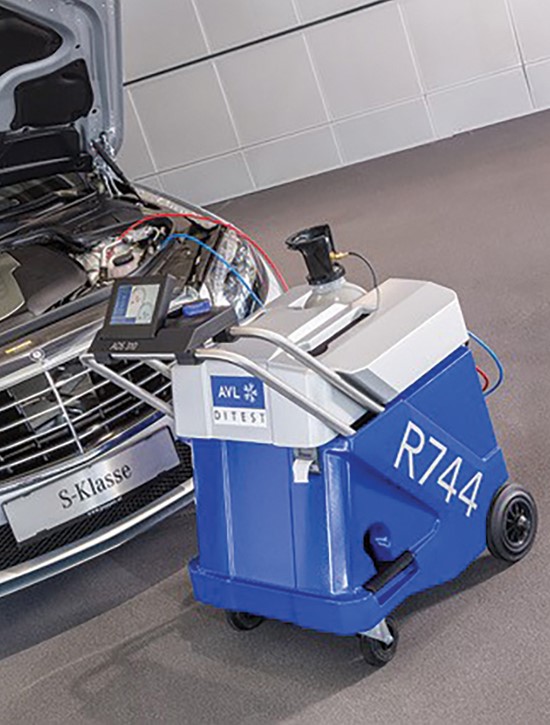CO2 is driving cool in Europe
Although R1234yf is well on the way to replacing R134a as industry standard automotive AC refrigerant in new cars, an alternative is already emerging in European luxury cars.
R744 is pure carbon dioxide. It is naturally occurring, inexpensive and non-flammable. Its use as a vapour-compression refrigerant dates back to the 1860s, when it was first used for chilling meat on ships.
The first production vehicle to use R744 is the Mercedes-Benz S400 Coupe and it will be rolled out across the S-Class and E-Class ranges. Most German car brands, including Audi and Porsche, are working
on R744 systems.
Whether R744 will be used in cars sold outside Europe remains to be seen, but SAE International this year re-opened a dated set of standards relating to vehicles using this refrigerant.
Questions remain over R744’s performance in Australia’s hot summer conditions, but during a recent auto-AC conference in Frankfurt a representative of component manufacturer Valeo told Vehicle
Air Conditioning Specialists of Australia (VASA) that Australians will appreciate the quicker cool-down times compared with R1234yf. Some tests have also shown R744 systems to have lower impact
on fuel consumption than those using R134a.
Just as the A2L mild flammability rating of R1234yf brings new handling and safety considerations, the extreme operating pressures of R744 and hazards associated with potentially high concentrations
of CO2 in vehicle cabins or working environments mean this refrigerant must also be used with care. For example, R744 systems can operate at up to 170 bar (2466 psi) and trapped liquid CO2 in hoses can cause
pressure explosions if exposure to higher temperatures causes a phase change. Dry ice can also form, which can burn skin and block parts of the system for long periods of time until it has evaporated.
Understandably, R744 systems and service equipment must be extra robust compared with those for R1234yf and R134a. The reason R744 is debuting in high-end luxury cars is to help absorb the cost of those
engineering challenges.
R744 service equipment, which vents used refrigerant to atmosphere, has integrated fans to disperse the gas. If CO2 concentrations in the air become unsafe, built-in sensors shutdown the process and alert
the technician.
Vehicles using R744 have cabin air quality sensors that detect refrigerant leaks and let in fresh air if CO2 concentrations exceed 800 parts per million (average atmospheric levels are below 400ppm).
Symptoms from over-exposure to CO2 range from drowsiness to, in extreme cases, death. But as with R1234yf, the right training, equipment and attitude will ensure safe use of R744.
Article courtesy of ARC member association VASA.

 Contact Us
Contact Us About the ARC
About the ARC

